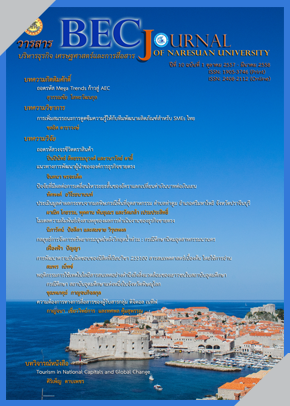พฤติกรรมการใช้เทคโนโลยีสารสนเทศอย่างคำนึงถึงสิ่งแวดล้อมของเยาวชนในสถาบันอุดมศึกษา กรณีศึกษา สถาบันอุดมศึกษาแห่งหนึ่งในจังหวัดพิษณุโลก
Main Article Content
บทคัดย่อ
The Behavior in Green Information Technology Usage Among Youths at a Tertiary School: A Case Study of a Tertiary School in Phitsanulok Province
The purposes of this study were 1) to study the behavior in green information technology usage among youths at a tertiary school in Phitsanulok province, and 2) to compare the differences in individual, socio-economic, and environmental characteristics on differences in such behavior. There were 403 samples, youths aged 15-24 years at a tertiary school in Phitsanulok province, selected by two-stage stratified random sampling. Questionnaire was utilized as a research tool and data were analyzed by frequency, percentage, mean, standard deviation, t-test, as well as F-test. The results showed that the majority, 71.2 %, had a moderate overall behavior level in green information technology usage. Differences in level of global warming knowledge, sideline income per month, living arrangement, study field cluster, experiences in participating in an environmental conservation project, obtaining global warming information, and sources of global warming information had significantly affected differences in the behavior in green information technology usage among youths. The youths in the Health Sciences Cluster and Social Sciences Cluster had higher scores in such behavior than the youths in the Sciences and Technology Cluster. Although television was the most broadly used information source for the youths, radio was the most effective source, compared with other information sources.


